
What’s the Difference Between Rye Bread and Sourdough Bread?
Welcome to the ultimate bread showdown! If you’ve ever found yourself torn between the earthy robustness of rye bread and the classy tang of sourdough, you’re in the right place. In this journey through the world of bread, we’ll unravel the delicious mysteries of these two beloved loaves.
From their intriguing histories and unique flavors to the nutritional benefits that make them stand out, this blog is your guide to becoming a bread aficionado.
Whether you’re a seasoned bread enthusiast or just embarking on your baking adventures, we’ve got you covered. Join us as we explore the origins of rye bread and sourdough, dive into the nutritional nuances that make them both good-for-you options, and learn the secrets behind baking the perfect loaf.
Get ready to elevate your bread game and discover which loaf reigns supreme in the battle between rye and sourdough. Let the bread adventure begin!
Table of Contents
ToggleThe History and Origins Of Rye Bread and Sourdough Bread
Exploring the history and roots of Rye Bread and Sourdough takes us on a fascinating journey through time, showcasing the diverse cultures and cooking traditions that shaped their development.
Rye Bread
Rye Bread’s origins can be traced back to Northern and Eastern Europe, where rye thrived in cooler climates. Early civilizations like the Vikings and Slavs relied on rye as a staple crop, leading to the creation of robust and filling bread. Rye’s hardiness made it a top choice in regions where wheat struggled to grow.
As time passed, Rye Bread became a symbol of resilience and nourishment. Its popularity in Scandinavian, German, and Eastern European cuisines cemented its status as a cultural icon. The distinctive earthy flavor and dense texture of Rye Bread became a testament to communities adapting to their unique agricultural landscapes.
Sourdough Bread
The tale of Sourdough is one of artisanal magic, where the blend of flour and water undergoes a natural fermentation process. With roots dating back to ancient Egypt, Sourdough became a fundamental part of breadmaking in various civilizations.
The sourdough fermentation process captures wild yeast and lactobacillus bacteria from the surroundings. This natural leavening gives the bread a unique tangy flavor, setting Sourdough apart from other types. It originated out of necessity, allowing communities to bake bread without relying on commercial yeast.
Throughout history, Sourdough became a cherished tradition in cultures worldwide. From the distinctive taste of San Francisco sourdough to the classic French Pain de Campagne, each region embraced and adapted the Sourdough technique, creating a mosaic of flavors that echoes across continents.
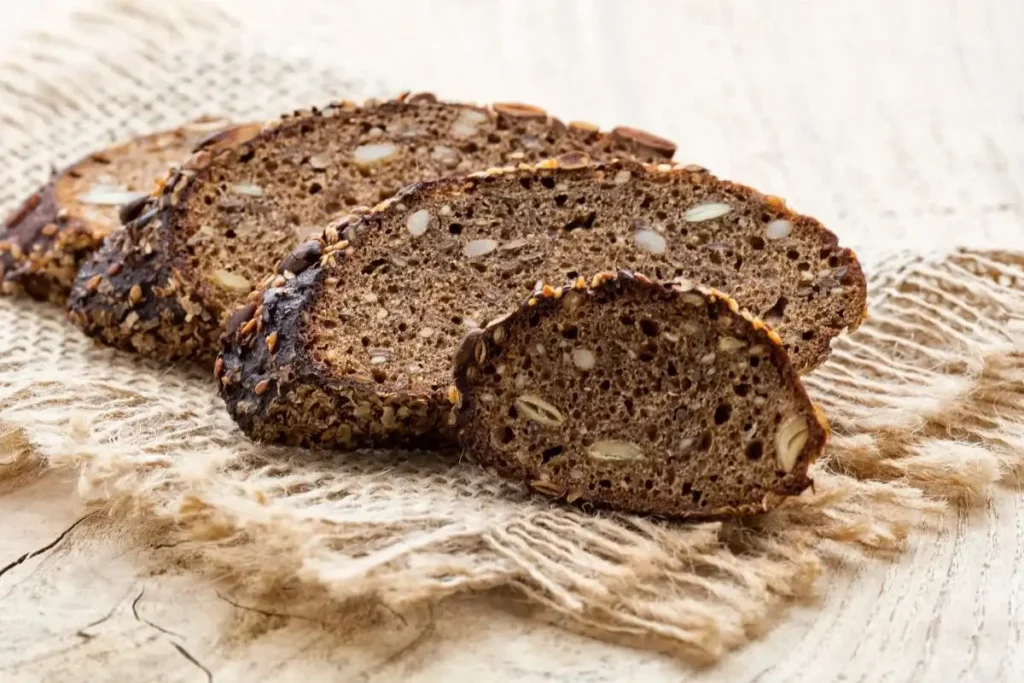
Nutritional Comparison Between Rye Bread and Sourdough Bread
When you’re trying to make smart food choices, it’s important to know the nutritional differences between Rye Bread and Sourdough. These two kinds of bread have their own unique stuff going on, and they both bring some health benefits to the table.
Rye Bread | Packed with Good Stuff
Rye Bread is all about giving you a solid dose of nutrients. Made mostly from rye flour, it’s loaded with dietary fiber, vitamins, and minerals. The high fiber helps keep your digestion on track, making you regular and keeping you feeling full for a good while.
On top of that, Rye Bread has essential nutrients like iron, magnesium, and B vitamins (like B1 and B3). These nutrients do important things for your body, like helping with energy, keeping your nerves in check, and just overall keeping you well. Plus, the unique antioxidants in Rye Bread might even help with inflammation.
Sourdough Bread | Packed with Good Bacteria
Now, Sourdough is a bit different. Its special nutritional profile comes from the way it’s made – fermented using wild yeast and lactobacillus bacteria. This not only gives it that tangy taste but also makes it extra nutritious.
Sourdough Bread is a good source of probiotics, those friendly bacteria that are great for your gut. They help with digestion and make it easier for your body to soak up nutrients. The fermentation process also breaks down gluten and phytic acid, which might make Sourdough easier on the tummy for those with mild sensitivities.
And don’t forget, Sourdough keeps some of the nutrients from the grains it’s made from, including B vitamins like folate, which adds to its nutritional goodness.
Flavor Profiles and Textures of Rye Bread and Sourdough Bread
Exploring the world of Rye Bread and Sourdough takes you on a tasty journey through different flavors and textures, each adding to a special eating experience.
Rye Bread’s Tasty Blend
Rye Bread stands out with its unique mix of rye flour, giving it a bold, earthy flavor that sets it apart from other breads. The rye flour not only brings a deep, hearty taste but also a hint of spiciness. Think of Rye Bread’s flavor like a mix of nutty undertones, making every bite satisfying and savory.
The texture of Rye Bread is worth noting too. It’s dense and hearty, with a chewiness that adds to the overall enjoyment. The robust texture makes it perfect for hearty toppings like cured meats and flavorful cheeses, creating a tasty combination of flavors and textures.
Sourdough’s Tangy Charm
On the flip side, Sourdough Bread brings a tangy and complex flavor, thanks to its unique fermentation process. The natural fermentation with wild yeast and lactobacillus bacteria gives Sourdough its distinct tang, adding a layer of sophistication to the overall taste. The tanginess isn’t overpowering; instead, it brings a touch of class to the flavor.
In terms of texture, Sourdough Bread offers a cool contradiction. Despite its sturdy structure, the bread manages to be airy and light, creating a nice contrast to the tangy notes. The crust is often crisp and golden, providing a satisfying crunch, while the inside stays soft and chewy. This mix of textures turns Sourdough Bread into a culinary masterpiece that’s great on its own or with various toppings.
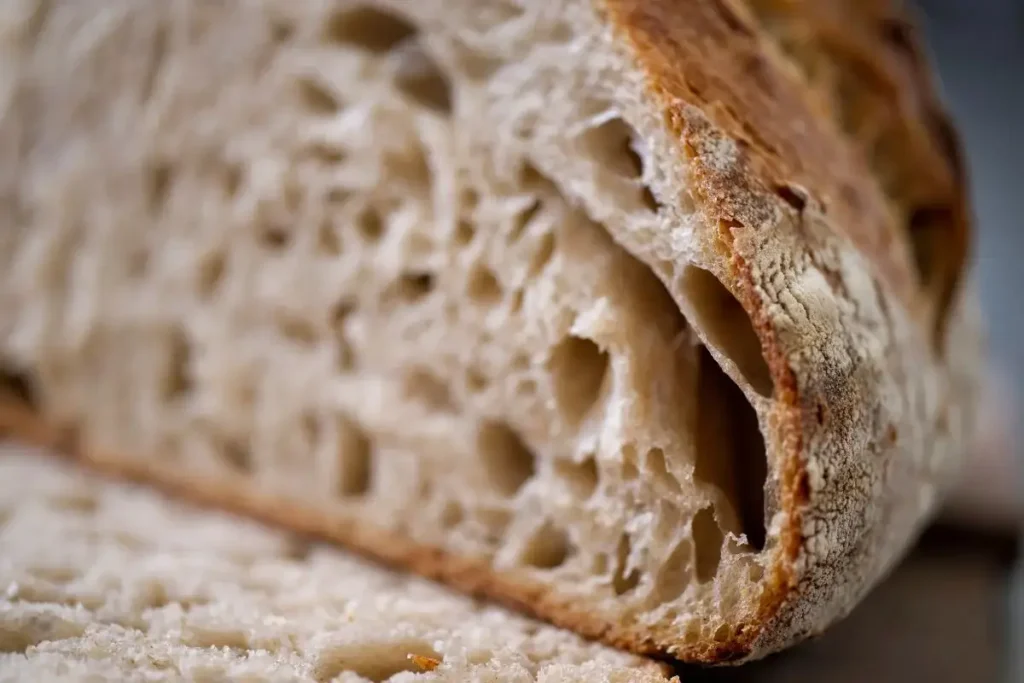
Health Benefits of Rye Bread and Sourdough Bread
On the journey to a healthy diet, bread plays a crucial role in promoting well-being. Let’s dig into the unique benefits of Rye Bread and Sourdough, highlighting how they not only satisfy your taste buds but also contribute to overall health.
Rye Bread’s Health Boost:
- Packed with Fiber: Rye Bread stands out for its high fiber content, which is great for digestion. It helps keep things moving in your digestive system and supports weight management by keeping you feeling full.
- Loaded with Nutrients: Rye Bread isn’t just about carbs – it’s a nutrient powerhouse with iron, magnesium, and various B vitamins. These nutrients are vital for energy metabolism, blood cell formation, and overall vitality.
- Heart-Friendly: The soluble fiber in Rye Bread, called beta-glucans, is excellent for heart health. It works to lower cholesterol levels, contributing to better cardiovascular well-being.
Sourdough’s Probiotic Power:
- Boosts Gut Health: Sourdough Bread, thanks to its unique fermentation process, introduces beneficial bacteria into your digestive system. These probiotics are crucial for maintaining a healthy balance of gut flora, supporting digestion, and boosting the immune system.
- Digests Easily: The fermentation in Sourdough breaks down gluten and phytic acid, making it potentially easier to digest, even for those with mild gluten sensitivities. This makes Sourdough a more gut-friendly option.
- Regulates Blood Sugar: Some studies suggest that Sourdough Bread might have a lower impact on blood sugar levels compared to regular bread. This is due to the organic acids formed during fermentation.
Baking Process and Techniques For Rye Bread and Sourdough Bread
Each bread type comes with its unique nuances, demanding specific processes and techniques to achieve that perfect balance of flavor, texture, and aroma.
Rye Bread Baking Process
- Mixing the Dough: To start the process, combine rye flour, water, yeast, and other ingredients. Rye flour’s dense nature requires a thorough mix to ensure an even distribution of ingredients.
- Kneading: The kneading process for Rye Bread is crucial. It develops the gluten structure, contributing to the bread’s texture. Due to rye’s lower gluten content, kneading may take a bit longer than with wheat-based doughs.
- Fermentation: Allow the dough to ferment, giving the yeast time to work its magic. The fermentation process contributes to the distinctive flavor and helps achieve the desired density in the final product.
- Shaping: Rye dough tends to be stickier, making shaping a bit challenging. Flour your hands and work surface adequately to prevent sticking. Shape the dough into the desired form, whether a traditional loaf or artisanal shape.
- Baking: Rye Bread typically requires a longer baking time at a slightly lower temperature than other bread types. This ensures the interior is thoroughly cooked without burning the crust.
Sourdough Bread Baking Techniques
- Creating the Sourdough Starter: Unlike Rye Bread, which often uses commercial yeast, Sourdough relies on a natural starter. Cultivate a mixture of flour and water, allowing wild yeast and bacteria to ferment over several days.
- Autolyse: Incorporate an autolyse phase, where flour and water are mixed and left to rest. This enhances gluten development and improves the final texture.
- Bulk Fermentation: Allow the dough to undergo bulk fermentation, a crucial phase in Sourdough baking. This extended fermentation period contributes to the characteristic tangy flavor.
- Shaping the Boule: Sourdough is often shaped into a boule, a round artisanal loaf. Mastering the shaping technique ensures an appealing final presentation.
- Scoring: Just before baking, score the Sourdough loaf’s surface. This not only adds an artistic touch but also helps control the bread’s expansion during baking.
- Dutch Oven Baking: Baking Sourdough in a preheated Dutch oven creates the ideal environment for a crispy crust and a soft, airy interior.
Rye Bread and Sourdough Bread Recipes
Let’s explore unique recipes that showcase the versatility of these bread types, offering delightful options for every palate.
Rye Bread Recipes

- Classic Rye Loaf: Start with the timeless classic – a hearty, dense Rye Bread loaf. Combine rye flour, water, yeast, caraway seeds, and a touch of molasses for sweetness. This versatile bread pairs excellently with savory spreads like cream cheese or smoked salmon.
- Marbled Rye Bread: Elevate your baking prowess with marbled Rye Bread. Incorporate light and dark rye doughs to create an eye-catching pattern. The result is not only visually appealing but also a harmonious blend of flavors.
- Rye Sourdough: Merge the best of both worlds with a Rye Sourdough. Utilize a sourdough starter for natural fermentation, adding depth to the robust rye flavor. The extended fermentation process enhances the nutritional value and digestibility.
Sourdough Bread Recipes

- Artisan Sourdough Boule: Craft an artisanal masterpiece with the classic Sourdough Boule. The key lies in the quality of the sourdough starter. Achieve a crispy crust and a soft, airy interior by following precise fermentation and baking techniques.
- Rosemary Garlic Sourdough: Infuse your Sourdough Bread with aromatic rosemary and garlic for a burst of flavor. This recipe adds a savory twist to the tangy notes of traditional Sourdough, making it a perfect companion for soups and stews.
- Whole Wheat Sourdough: Opt for a healthier option with Whole Wheat Sourdough. Substitute part of the white flour with whole wheat flour for a nuttier taste and added fiber. This recipe embodies the marriage of wholesome goodness and exceptional flavor.
Bread Baking Tips for Success
- Precise Measurements: Accurate measurements are crucial for both Rye and Sourdough recipes. Invest in a kitchen scale for precision in ingredient quantities.
- Temperature Control: Maintain consistent temperatures during fermentation and proofing. This ensures the yeast and bacteria work their magic at the right pace.
- Experiment with Hydration Levels: Adjusting hydration levels in your dough can impact the final product’s texture. Experiment to find the perfect balance for your preferences.
- Artistic Scoring: When baking Sourdough, get creative with scoring patterns. Not only does this add visual appeal, but it also influences the bread’s expansion during baking.
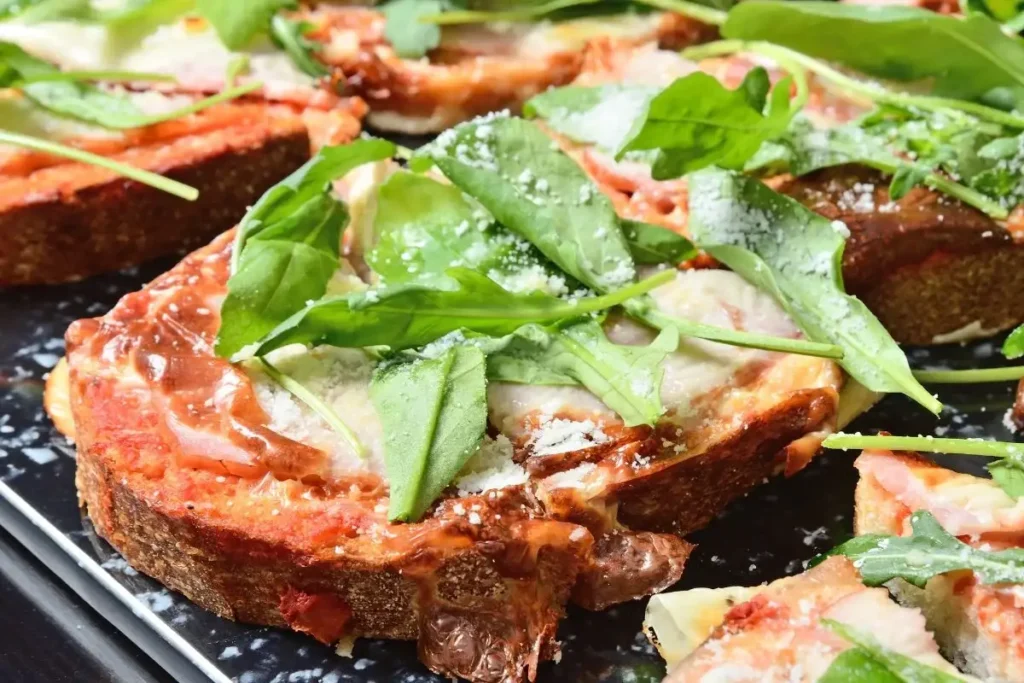
Pairing Rye Bread and Sourdough Bread with Different Foods
When it comes to Rye Bread and Sourdough, their unique characteristics lend themselves to a wide array of pairings, enhancing the overall dining experience.
Pairing Rye Bread with Foods
- Smoked Meats and Cheeses: The robust and earthy flavor of Rye Bread makes it an ideal companion for smoked meats and cheeses. Whether it’s pastrami, smoked turkey, or a sharp cheddar, the hearty nature of Rye Bread holds its own against these savory delights.
- Pickled Vegetables: The slightly tangy and dense texture of Rye Bread complements the acidity and crunch of pickled vegetables. Try it with classic dill pickles, sauerkraut, or pickled onions for a delightful contrast in flavors and textures.
- Creamy Spreads: Rye Bread serves as the perfect canvas for creamy spreads. Indulge in the classic pairing of cream cheese on a slice of dense Rye Bread or experiment with herbed butter for an extra layer of flavor.
Pairing Sourdough Bread with Foods
- Avocado and Poached Egg: The airy and tangy notes of Sourdough provide an excellent backdrop for creamy avocado and a perfectly poached egg. The combination of textures and flavors creates a breakfast or brunch sensation.
- Mushroom and Goat Cheese: Elevate the earthy tones of Sourdough by pairing it with sautéed mushrooms and goat cheese. The tanginess of the Sourdough cuts through the richness of the cheese, creating a harmonious blend.
- Bruschetta with Fresh Tomatoes: Transform Sourdough into a rustic bruschetta base by toasting slices and topping them with fresh tomatoes, basil, and a drizzle of balsamic glaze. The sourdough tang adds a delightful twist to this classic appetizer.
Culinary Tips for Pairing Success
- Consider Intensity: Match the intensity of the bread with the flavors of the accompanying foods. Robust Rye pairs well with bold flavors, while the tangy notes of Sourdough enhance lighter fare.
- Texture Play: Think about contrasting textures. The denseness of Rye Bread complements the crunch of pickles, while the airy nature of Sourdough balances creamy spreads.
- Balance Flavors: Seek a balance of flavors. If the bread is tangy, pair it with ingredients that either complement or mellow the acidity for a well-rounded taste experience.
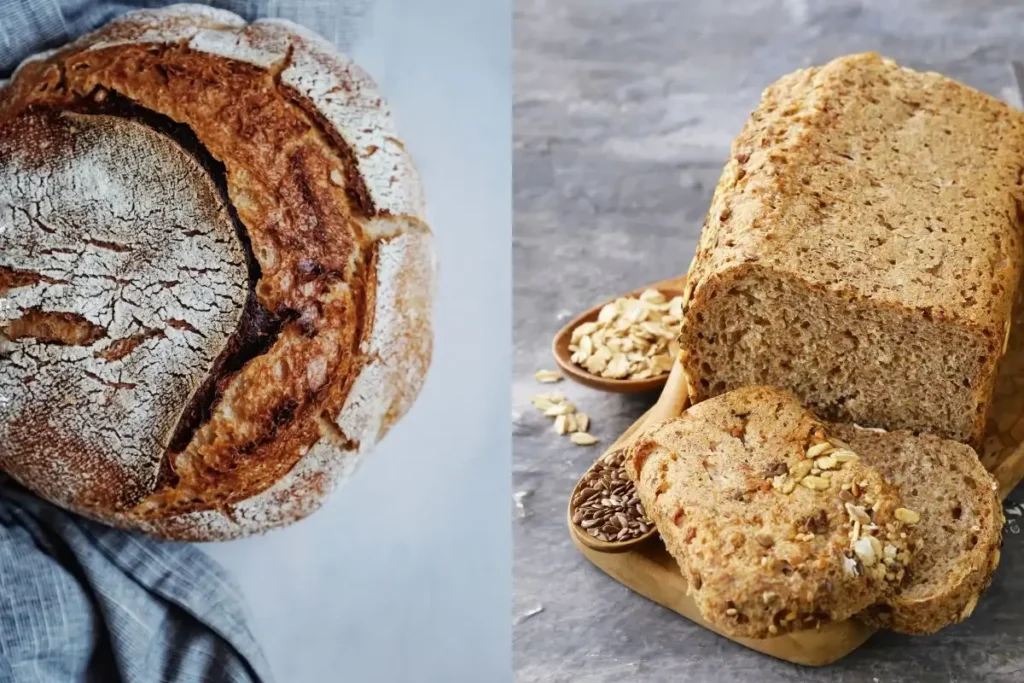
Which One is Better for Beginner Bakers | Sourdough Bread vs Rye Bread
For novice bakers eager to delve into the world of artisanal bread, the choice between Sourdough and Rye Bread can be pivotal. Both present unique challenges and rewards, making the decision a matter of personal preference and comfort in the kitchen.
Sourdough offers a captivating journey into natural fermentation, requiring a sourdough starter and a patient approach. While it demands careful attention to timing and technique, the process can be immensely gratifying for those who enjoy hands-on experimentation.
On the other hand, Rye Bread simplifies the initial steps with the use of commercial yeast. Its straightforward mixing and kneading process make it more approachable for beginners, offering a delightful result with a hearty flavor.
What’s the Difference Between Rye Bread & Sourdough Bread? | Final Thoughts
In the big debate between Rye Bread and Sourdough, it really comes down to what you personally like. Rye has a strong, earthy taste and a dense texture, making it a symbol of toughness over the years. On the other hand, Sourdough, created through artisanal skills and natural fermentation, has a tangy kick and a light, chewy feel that’s perfect for a more refined palate.
As we explore the history, nutrition, unique flavors, and health benefits of these classic breads, making a decision turns into a fun journey instead of just picking one. Whether you’re into the robust taste of Rye or the classy tang of Sourdough, the bread you go for shows off your culinary preferences and honors the traditions behind these timeless loaves.
So, dive into this tasty adventure armed with the knowledge to up your bread game and enjoy every yummy bite.
Lindsey Mackenzie
About me
Hi there! I’m Lindsey Mackenzie, the founder of Bake Smartly. Baking has been my passion since childhood, growing up in my father’s bakery. With Bake Smartly, I’m excited to share my love for all things sweet and savory. Join me on this delicious journey as we whip up scrumptious treats and sprinkle joy into every bite!

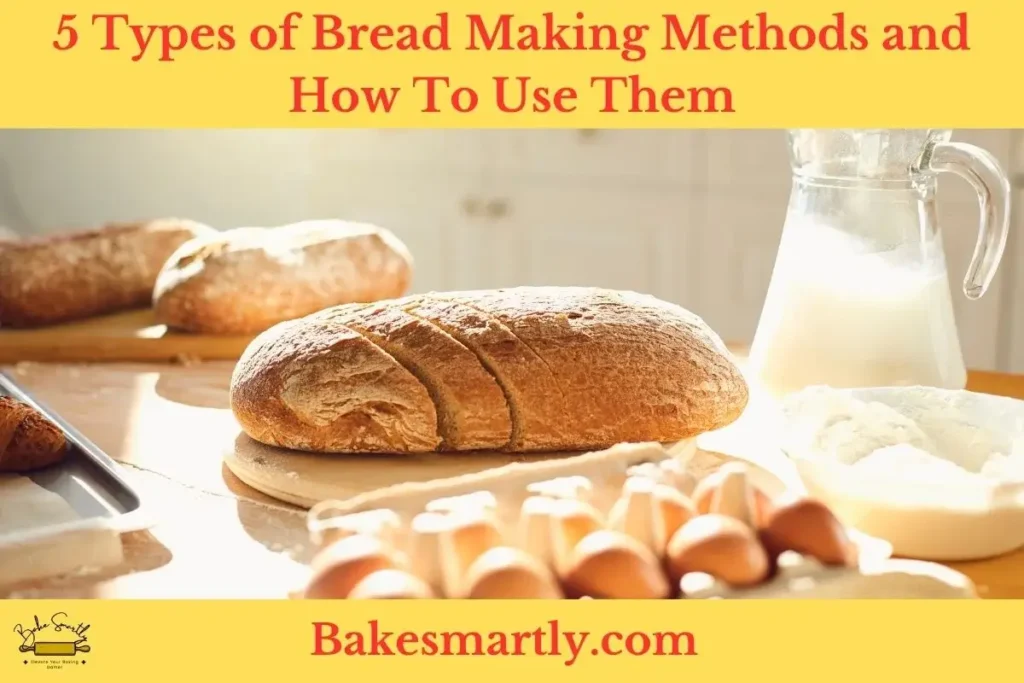
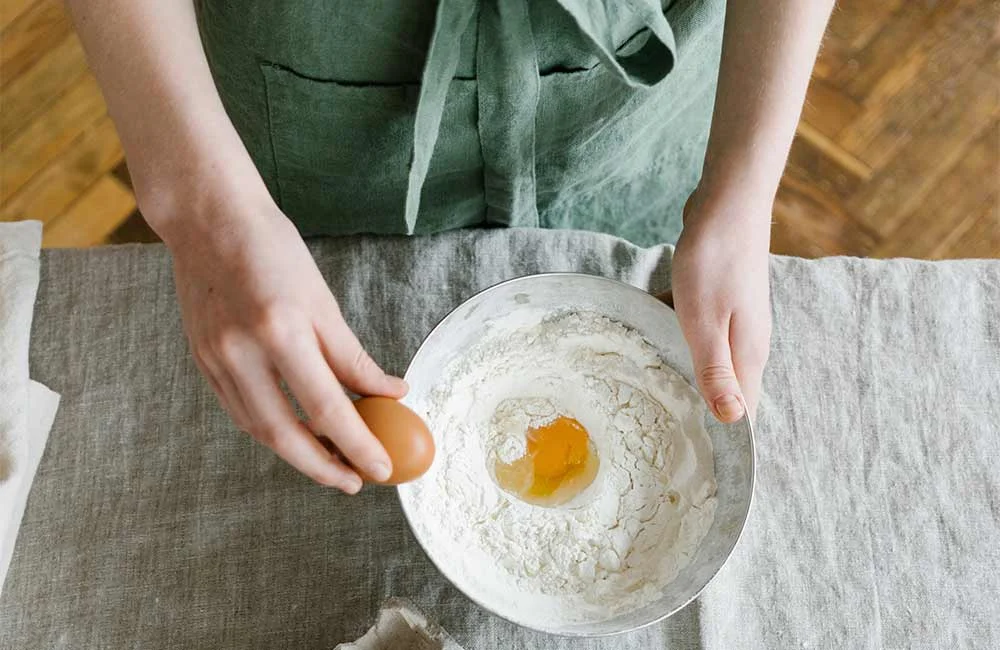




Comments (2)
gold ira companies
4 January 2024 at 11:22
This is the perfect blog for anyone who wants to understand this topic.
You know so much its almost tough to argue with you (not that I really would want to…HaHa).
You definitely put a brand new spin on a topic that’s been written about for years.
Excellent stuff, just great!
Lindsey Mackenzie
5 January 2024 at 10:52
Thank you so much for your kind words! I’m thrilled to hear that you found the blog helpful and enjoyed the fresh perspective on the topic. If you ever have any questions or want to delve deeper into the subject, feel free to reach out.